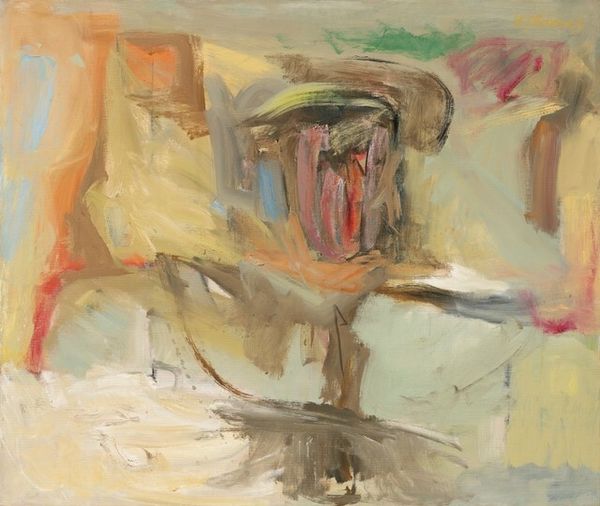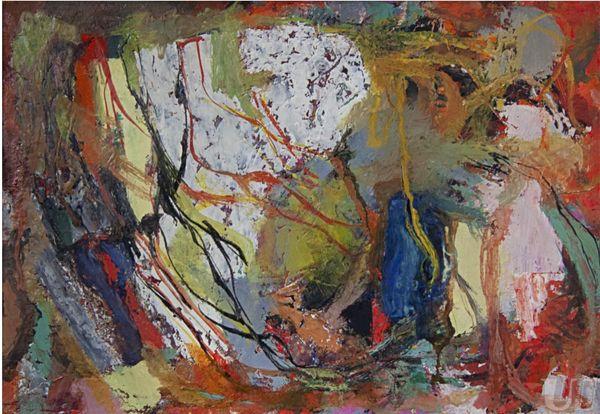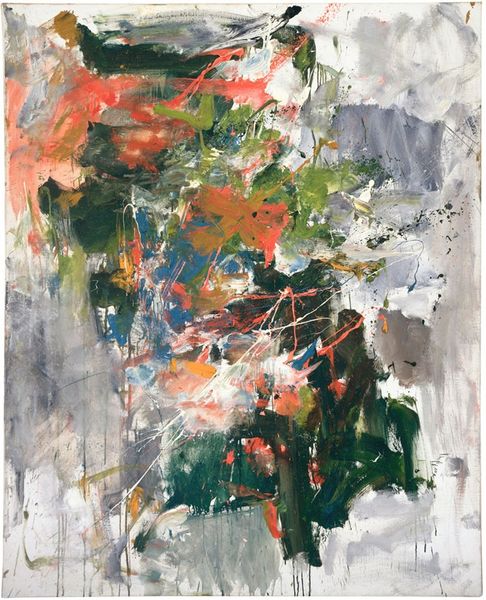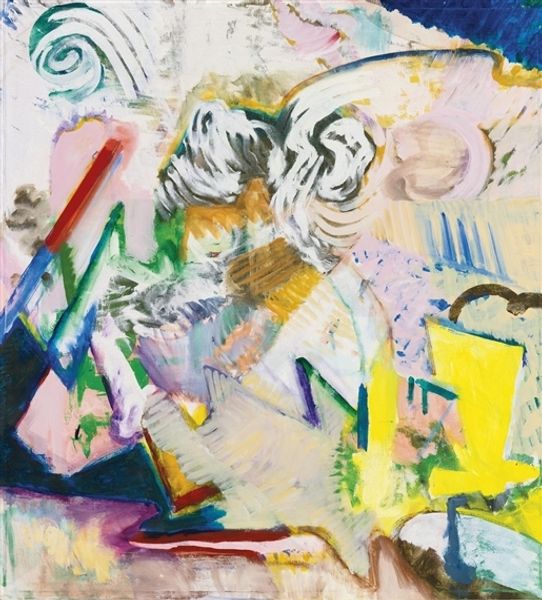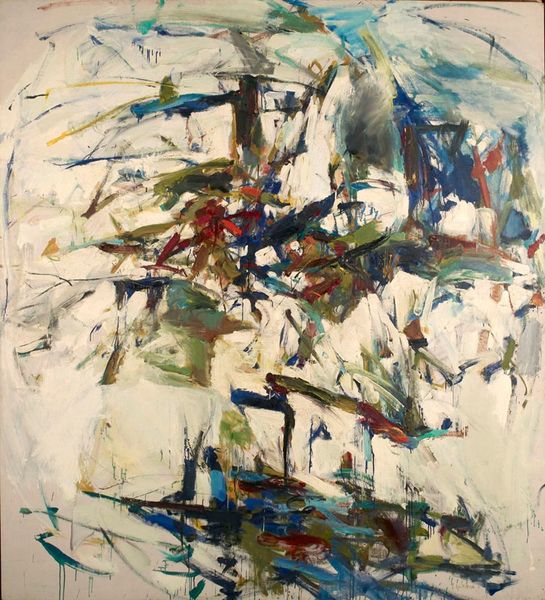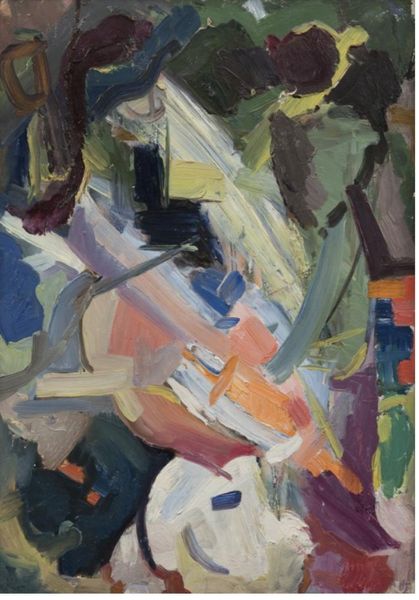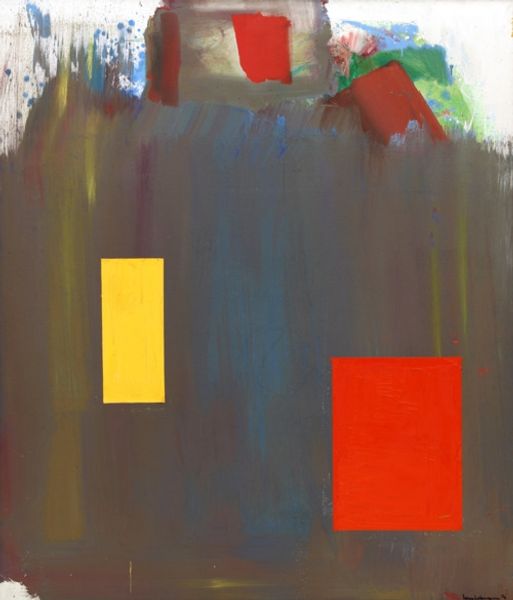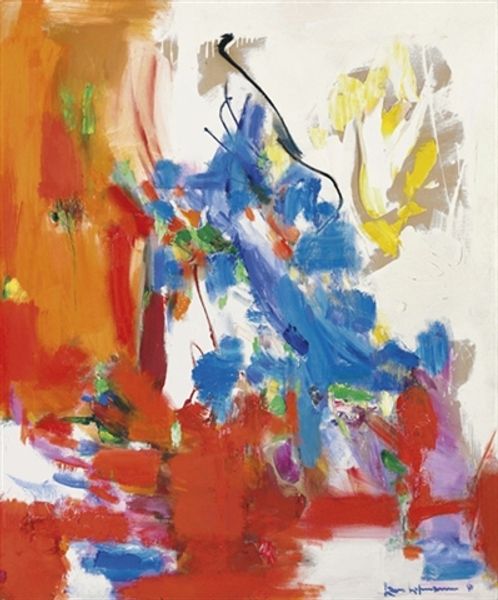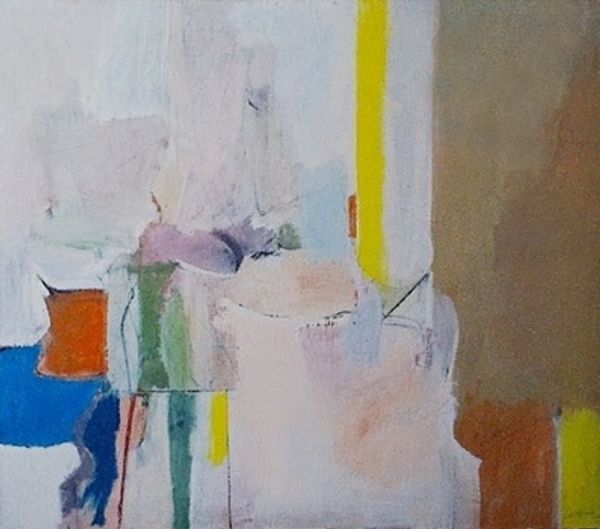
#
pattern-and-decoration
Copyright: Miriam Schapiro,Fair Use
Editor: Here we have Miriam Schapiro's "Down to Earth," painted in 1959 with oil on canvas. I'm immediately drawn to the swirling, almost dizzying composition. It feels optimistic with the bright yellows and oranges. What catches your eye about this piece? Curator: What interests me is the date, 1959. Abstract Expressionism, while still influential, was starting to face challenges from younger artists. Think about the social context: post-war optimism mixed with anxieties about the Cold War, anxieties that found expression in the intensity of Abstract Expressionism. Schapiro, though, presents a different sensibility. Do you see any echoes of other Abstract Expressionist painters? Editor: I can see hints of de Kooning in the gestural brushstrokes and layering, but it feels lighter somehow, less angsty? Curator: Exactly! And that's key. While embracing abstraction, Schapiro departs from the macho, heroic narrative often associated with the movement. This work, created early in her career, subtly subverts those established norms. The very title, "Down to Earth", almost mocks the idea of the painter as some kind of mythic figure wrestling with existential dread, wouldn’t you agree? Editor: I do. Knowing that gives the title a new dimension! Curator: Also, it’s crucial to remember that even within seemingly “pure” abstraction, the market and the institutions play a big role. For Schapiro, gaining recognition as a female artist within a male-dominated scene was a significant hurdle. How might that context influence our understanding of a painting like this? Editor: Perhaps the brighter palette and more fluid forms were a way of asserting a different kind of artistic voice, moving away from the darker, more brooding tones and compositions typically favoured by male abstract expressionists? I hadn't considered that. Curator: Precisely. It pushes us to question who gets to define artistic value and how those definitions change over time. Editor: This has completely shifted how I see "Down to Earth". It's not just about colours and shapes; it’s part of a bigger conversation about art history and power dynamics. Curator: It's a painting that, like Schapiro herself, is much more than it initially appears.
Comments
No comments
Be the first to comment and join the conversation on the ultimate creative platform.
